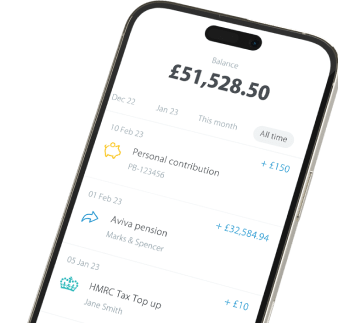
This article was last updated on 12/06/2023
When you start your own business, suddenly you’re responsible for paying your own income tax and National Insurance Contributions (NICs). You no longer have a boss to whip it out of your salary under Pay-As-You-Earn (PAYE).
With the deadline for tax returns and tax bills fast approaching at the end of January, buckle up for some tax tips to make life easier!
Starting small
As a sole trader, you can earn up to £1,000 a year from your business without paying a penny in tax or having to tell the taxman about it. This is known as the ‘trading allowance’.
However, you might still choose to register as self-employed to qualify for Tax-Free Childcare, or volunteer to pay £3-a-week Class 2 NICs to benefit from Maternity Allowance and a State Pension.
Registering as self-employed
Raking in more than £1,000 a year? Now you do have to inform HMRC and file a tax return. Remember that’s £1,000 during a tax year, so between April 6 one year and April 5 the next.
If so, you’ll need to register for Self-Assessment by 5 October in the following tax year.
Even if you have to do a tax return, you might still escape income tax if your profits are less than the tax-free ‘Personal Allowance’. For most people, the Personal Allowance is £12,570 for the 2023/24 tax year.
If you’ve used the Self-Assessment online service before, you’ll have a Government Gateway user ID number, which was probably sent to you by post when you first signed up. You need to dig this out and use it to sign in to your HMRC online account, along with your password.
If you’re filing online for the first time, you need to have your unique taxpayer reference (UTR), which can be found on letters from HMRC. You’ll then need to create a Government Gateway account, and your activation code will be sent in the post.
Simplest structure
The easiest way to become self-employed is as a ‘sole trader’, where you are the sole owner of your business. You face less faff, less paperwork and more privacy than setting up a limited company, although you also have less protection if your business gets into debt.
If your business grows, becoming a limited company could mean you pay lower taxes and stand a better chance of borrowing - but being a sole trader makes life simpler at the start.
Claiming for more than your (low) costs
When self-employed, you can cut your tax bill by claiming some of the costs for running your business, as you only pay tax on what’s left after costs are taken off.
As a sole trader, you can choose to deduct the £1,000 trading allowance from your earnings, instead of claiming your actual costs. This could be a winner if your expenses are super low.
Hang on to those receipts
Once you face bigger bills for running your business - totting up the likes of stationery and phone bills, train tickets and stock, any staff costs, insurance, accountancy fees, advertising and website costs - you’ll be better off keeping receipts and records.
Remember, if you’re a basic rate taxpayer, every £1 in expenses cuts 20p off your income tax bill.
Work or pleasure?
Sadly, only certain expenses can be claimed against tax. HMRC has a handy helpsheet (HS222) with a table of the most common allowable expenses.
The key point is that trading expenses only count if they are ‘wholly and exclusively’ for the purpose running your business and you can’t claim anything used for personal, as opposed to business, reasons.
So for example if you use your mobile 70% for business and 30% for personal calls, you can only claim 70% of your phone bill. Note you can’t just pluck a figure out of the air but need to be able to back it up. You could for example look at two or three months’ of bills, work out what percentage are for work, and apply that to bills for the rest of the year.
Easy option if you work from home
If you work from home, thankfully there’s an easier option than splitting out bills for Council Tax, gas, electricity, mortgage interest or rent and home insurance, depending on how much of the house you use and when.
Instead, you can claim simplified expenses:
£10 a month when you work 25-50 hours a month from home
£18 a month for 51-100 hours
£26 a month for 101 hours or more
Even better, you’re still allowed to claim the work part of your home phone and broadband bills on top.
There are even special simplified expenses if you live in your business premises, for example when running a bed & breakfast.
Simple way to claim for car costs
You can also claim simplified expenses if you use your own car to do a bit of driving for your business.
Rather than divvying up all your actual costs for running a car, keep track of the mileage for work, then whack in a claim for 45p a mile for the first 10,000 miles and 25p a mile after that.
Cash accounting for an easy life
If you’re a sole trader or partnership with a turnover less than £150,000 a year, you don’t have to grapple with traditional accounting on an ‘accruals basis’. Instead, you can take the easy option and do your accounts on a cash basis instead.
With cash accounting, you only count income when you’ve actually been paid, and expenses when you’ve actually spent the money. This means you won’t end up paying tax on work where you’ve invoiced but haven’t been paid.
With cash accounting, you also don’t have to worry about capital allowances, and spreading the cost of items that last for longer than a year, like a work phone, printer or computer.
Instead, you just bung in the cost when you spend the money. The main exception is if you buy a car for your business, you should instead claim for it as a capital allowance.
However, cash basis may not be right for your business if you have high stock levels, losses that you want to offset against other businesses or face financing charges above £500 a year. If you want to borrow money, banks may insist on seeing traditional accounts too.
Looking on the bright side, if you use an accountant, you can claim their cost as an allowable expense.
Watch out for a bigger tax bill with payments on account!
The good news is that when you start as self-employed, you don’t have to pay tax straight away.
Instead, any income tax is only due at the end of January after the tax year when you started earning. So for example you might have raked in mega bucks way back on 6 April 2018 - but won’t have to fork out for the tax bill until 31 January 2020, nearly 22 months later!
The bad news is that once your tax bill tops £1,000, the government starts wanting money in advance. As in, half the expected tax at the end of January, and the other half at the end of July. Your projected tax bill will be based on your earnings in the previous tax year (although you can always tell HMRC if you expect to earn less).
So suddenly, for example, on top of the 2018/19 tax bill due by the end of January 2020, you will also need to pay half the tax expected for 2019/20.
This can hit hard the first time it happens, when your tax bill shoots up roughly 50% higher than expected. Count your blessings that at least in future years you’ll already have made payments in advance.
Cut your tax bill with pension payments
Self-employment means you have to sort out your own self-employed pension, with no employer to choose it or pay in for you.
High earners get the benefit that saving for retirement can cut their tax bill.
You can stash away up to 100% of earnings in a pension each year, maximum £40,000 a year in 2019/20, and your pension provider will automatically add basic rate tax relief.
But if you’re actually a higher rate or additional rate taxpayer, you can use your Self-Assessment return to claim the difference between basic rate and your income tax rate, and see it taken off your tax bill.
Final checklist before you submit a tax return:
Make sure things match up
When you’re calculating the money your business has made and the expenses you’ve incurred, cross-reference your numbers. Check your bank statement to make sure that the payments you’ve actually received match the invoices you’ve issued, and check that payments going out of your account match the receipts you’ve saved.
Keep the late penalties in mind
If you’re worried about being able to pay your tax bill, don’t delay filing your tax return as a result, as the penalties for late submission are steeper than the penalties for late payment.
If your Self Assessment return is late, you’ll usually have to pay an immediate fine of £100, and then penalties will keep piling up if you still don’t file your return. Bear in mind that you’ll always get a penalty for filing your tax return late, even if you don’t owe any tax.
Remember to pay!
Once you’ve filed your tax return, don’t forget to actually pay your tax bill. Remember that the deadline for paying your tax is the same as the deadline for filing your tax return: 31 January.
Once you’ve submitted your tax return online, your tax calculation will be made and you can then log back into your Self-Assessment account to pay your bill. Remember that payments can take a day or two to clear, depending on the payment method you use, so transfer the money a few days before the deadline to ensure it gets there in time.
A quick, straightforward way of paying is via online bank transfer, but make sure you use your UTR as the payment reference so that the payment is credited to your account.
Faith Archer is a Personal Finance Journalist and Money Blogger at Much More With Less.






